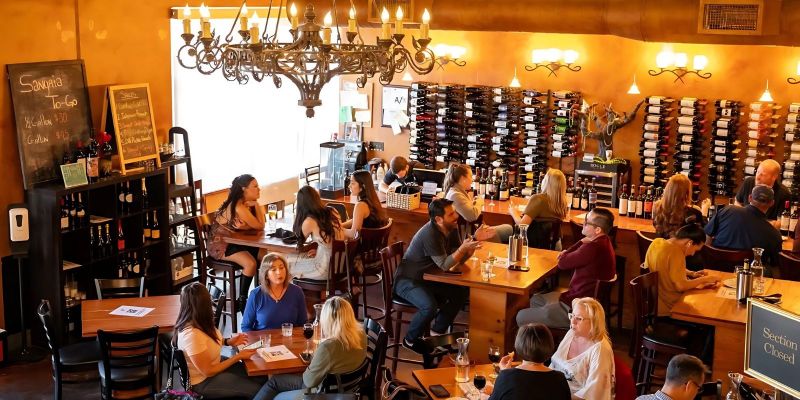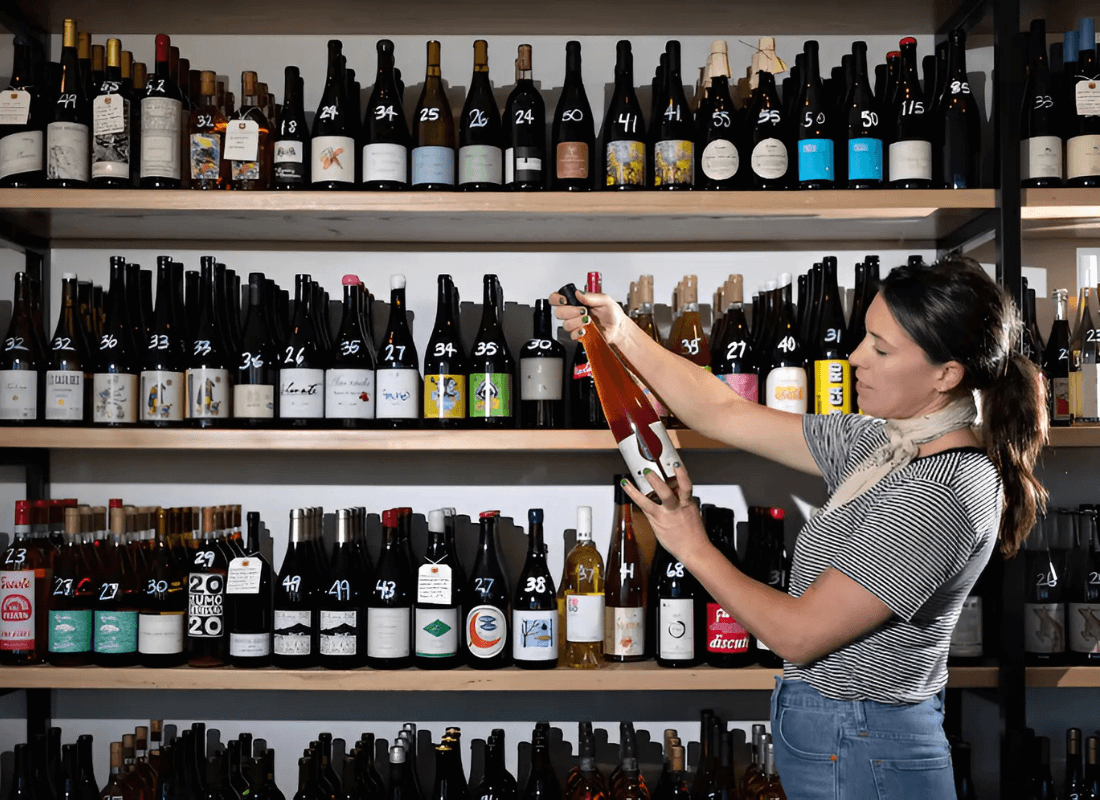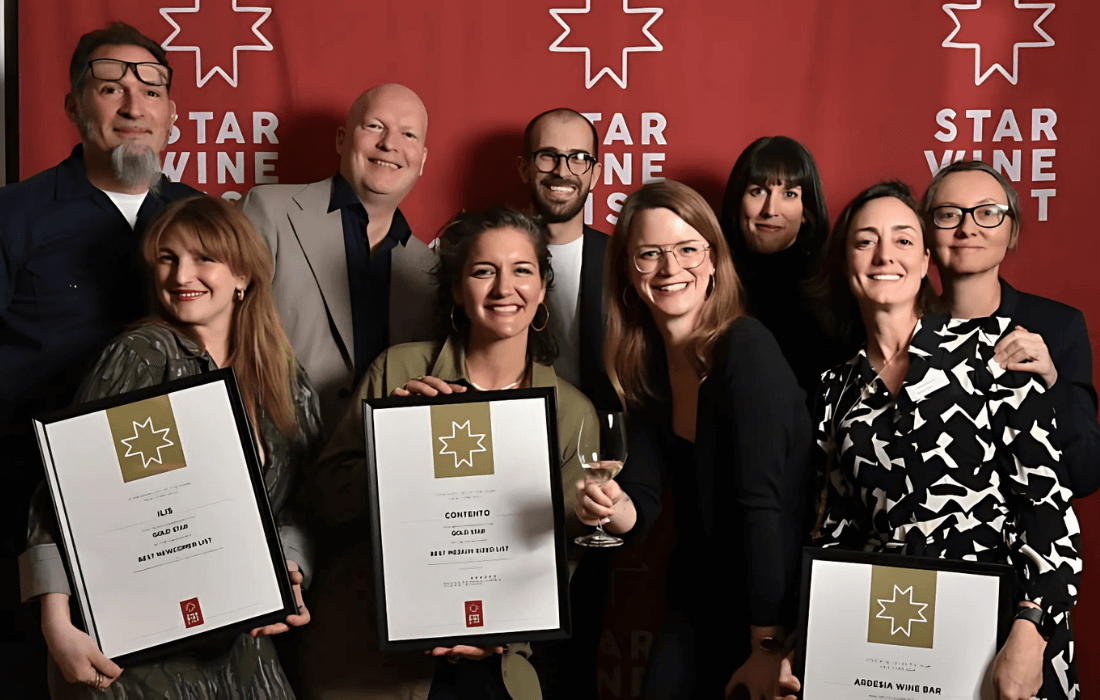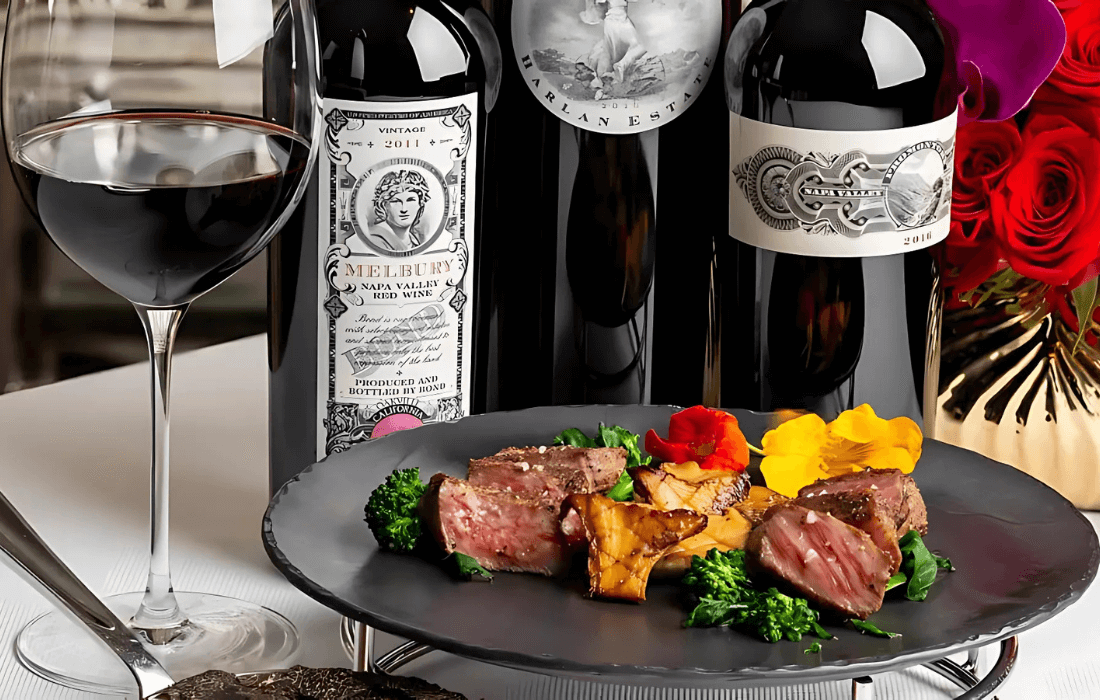Educating Sommeliers Worldwide.
By Beverage Trade Network

The allure of owning a wine bar is undeniable. It combines the charm of hospitality with the sophisticated pleasure of wine appreciation. According to IBISWorld, the U.S. wine bar industry is valued at approximately $3.0 billion as of 2024, with a compound annual growth rate (CAGR) of 0.3% over the past five years. This steady growth reflects a rising consumer demand for unique and immersive dining experiences. However, entering the wine and hospitality market requires a strategic approach, from understanding consumer trends to navigating complex licensing laws. This article provides a step-by-step guide to help you craft a unique wine bar concept, secure funding, and position yourself for success in the competitive market. Whether you’re a wine enthusiast or a seasoned entrepreneur, these insights will equip you to make informed decisions and create a lasting impact in your community.
The U.S. is one of the largest wine-consuming countries in the world, with consumption habits evolving toward high-quality, boutique wines. Millennials and Gen Z are driving the demand for experiential dining, natural wines, and sustainability-focused offerings, making wine bars a prime business opportunity. Location is a critical factor in your success. Cities like Napa Valley, Portland, and New York have robust wine cultures, but smaller towns and suburban areas are also showing a growing appetite for wine-centric venues. Market research is essential to understand your local audience and their preferences, whether that’s a focus on regional wines, premium imports, or a combination of both.
The U.S. wine bar scene is competitive, so it’s vital to create a concept that stands out. A successful wine bar isn’t just a place to drink, it’s a destination for an immersive experience.
Start by defining your niche. For example, you could focus on organic or biodynamic wines, offer wines exclusively from a particular region, or create a themed environment such as a French-inspired bistro or an urban chic lounge. Beyond wine, consider the overall ambiance. Lighting, music, and interior design play a significant role in creating an inviting atmosphere that matches your target demographic’s tastes. Additionally, think about how you’ll educate and engage your guests. Offering wine-tasting flights, pairing classes, or events like “meet the winemaker” nights can enhance your appeal and build a loyal customer base.

Source: The Dallas Morning News
Navigating the regulatory landscape is one of the most challenging aspects of opening a wine bar. Alcohol licensing requirements in the country vary widely by state and locality, so you’ll need to research the specific laws in your area. Generally, you’ll need a liquor license that allows you to serve wine on-premises. Some states have specific licenses for wine bars that are less costly than full-service liquor licenses. Be prepared for application fees, background checks, and public hearings, as these are common steps in the licensing process.
Additionally, you must comply with zoning laws, health department regulations, and food service permits if you plan to serve food. Don’t overlook the importance of liability insurance, which protects your business against alcohol-related incidents. Hiring an attorney or consultant familiar with the hospitality industry can streamline this process and help you avoid costly mistakes.
Your wine menu is the heart of your business. It should reflect your brand identity and appeal to your target audience while balancing variety and specialization. Consider sourcing your wines from local wineries to support regional producers and create a “farm-to-glass” experience. You could also work with distributors to access a wide range of domestic and international wines. Offer wines at varying price points to accommodate different budgets while maintaining a curated feel.
To educate and intrigue your customers, provide detailed tasting notes and suggested pairings for each wine. Hiring a sommelier or training your staff in wine knowledge can elevate the customer experience and encourage repeat visits.

Source: Star Wine List
Starting a wine bar requires substantial financial planning. Initial costs can include rent, renovations, licensing fees, inventory, and marketing expenses. Depending on the location and scale of your wine bar, these costs could range from $50,000 to over $500,000. Create a detailed business plan that outlines your projected expenses, revenue streams, and profitability timeline. This plan will be essential if you seek funding from investors or apply for a small business loan. Be conservative in your estimates and build a cash reserve for unforeseen expenses during the first year of operation.
Your staff plays a crucial role in the success of your wine bar. Key hires include bartenders, servers, and potentially a sommelier. Look for individuals who are not only knowledgeable about wine but also passionate about delivering exceptional customer service. Invest in training programs that cover wine education, food pairing, and hospitality skills. Regularly update your staff on new additions to your wine menu and host tastings to keep them engaged and informed. A well-trained team can create a welcoming atmosphere and foster customer loyalty.
Building a strong brand identity is essential for attracting and retaining customers. Start with a memorable name, logo, and brand story that reflects your wine bar’s unique concept. Digital marketing should be a top priority. Develop a professional website with your menu, event calendar, and reservation options. Leverage social media platforms like Instagram and Facebook to showcase your wine selection, promote events, and engage with your audience.
Hosting grand opening events, collaborating with local wineries, and offering loyalty programs can also generate buzz and encourage repeat visits. Positive online reviews on platforms like Yelp and Google are invaluable for establishing credibility and drawing in new customers.
Food and wine are a natural pairing, and a thoughtfully designed food menu can significantly enhance your wine bar’s appeal. While you don’t need to offer a full dining experience, small plates, charcuterie boards, and desserts that complement your wine selection can increase customer satisfaction and sales. Keep in mind dietary trends and preferences. Offering gluten-free, vegan, or health-conscious options can attract a broader audience. Collaborate with local chefs or caterers to create a menu that aligns with your wine bar’s concept and highlights seasonal ingredients.

Source: Robb Report
A successful wine bar is more than just a business, it’s a community hub. Partnering with local wineries, breweries, and food vendors can create a sense of collaboration and support within your area. Consider hosting events that bring people together, such as wine tastings, trivia nights, or live music performances. These activities not only increase foot traffic but also help establish your wine bar as a go-to destination for social gatherings. Additionally, consider starting a wine club where members receive exclusive access to tastings, discounts, or special events. This can help build a loyal customer base and provide a steady stream of income.
[[relatedPurchasesItems-61]]
The hospitality industry comes with its own set of challenges, including competition, seasonality, and changing consumer trends. To stay ahead, be adaptable and willing to experiment with new ideas. For example, consider offering non-alcoholic wines or eco-friendly packaging to cater to health-conscious and sustainability-focused customers. Regularly seek feedback from your patrons to understand their preferences and improve your offerings. Staying updated on industry trends and attending wine expos or conferences can also help you refine your approach and maintain a competitive edge.
Opening a wine bar in the U.S. is a rewarding yet complex endeavor. From understanding consumer trends to navigating licensing requirements, success requires meticulous planning, creativity, and dedication. By crafting a unique concept, curating an exceptional wine menu, and fostering community connections, you can create a wine bar that stands out in the competitive hospitality market. The journey to opening a wine bar is just as rewarding as the destination. With passion, resilience, and a focus on creating unforgettable experiences, you can build the foundation for a thriving and memorable business.
Header Image Source: Copa Wine Bar
Also Read:
Server Wine Training: Content, Organization, and Implementation
How to Create a Diverse and Dynamic Wine List?
Wine Menu Created By ChatGPT and Its Thought Process